
29 minute read
History
Unless noted, all programs are presented on Zoom; listed times are Eastern Time. Online registration is required.
David Letterman with guest Teri Garr, 1982
From Carson to Oprah to Stephen Colbert
A History of the TV Talk Show
From its start in the early 1950s, the talk show has been one of television’s most versatile and durable formats. Pioneering programs like “Today,” “Person to Person,” and “Tonight” established the basic features that have guided the format ever since, particularly the importance of the host—from Carson to Letterman, and Winfrey to Stewart—as the chief focus of the proceedings.
Media expert Brian Rose looks at the fascinating history of the television talk show and examines its changing appeal from decade to decade. Thurs., Jan. 5, 12–1:15 p.m.; CODE 1J0-225; Members $20; Nonmembers $25
Tutankhamun and the Tomb that Changed the World
In an exciting new look at the life and tomb of King Tutankhamun, Bob Brier explores the 100 years of research that have taken place since the boy-king tomb’s discovery in 1922.
Brier shares CT scans of Tutankhamun’s mummy that reveal more secrets of the young pharaoh. He also illuminates how the discovery of the tomb influenced Egyptian politics and, outside Egypt, the modern blockbuster exhibitions that raise great sums of monies for museums all began with Tutankhamun.
Brier’s book Tutankhamun and the Tomb that Changed the World (Oxford University Press) is available for purchase. Tues., Jan. 10, 6:45 p.m.; CODE 1D0-006; Members $20; Nonmembers $25

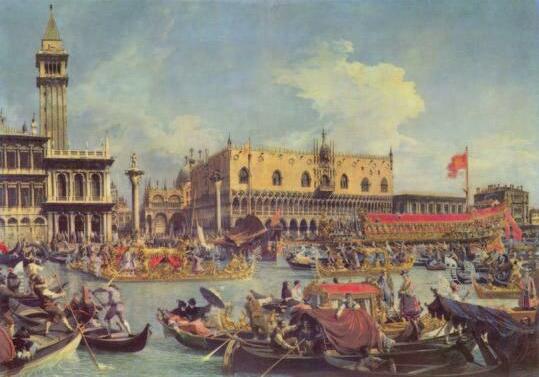
The Bucintoro Returning to the Molo on Ascension Day by Canaletto, 1732
Casanova’s Venice
The 18th-century Venice of the fabled adventurer Casanova was very different from the Venice of the Renaissance. In many ways he was emblematic of this time, in which the city endured a period of decline and decadence amid a spectacular cultural flowering. Its status had plummeted in the face of a changing political landscape in Europe and beyond.
Historian Monica Chojnack uses Casanova’s autobiography— considered an authentic look at European culture—to explore this tumultuous time and how Venetians responded socially, politically, and artistically to the decline of the Renaissance and the birth of a new era. Wed., Jan. 11, 12–1:15 p.m.; CODE 1H0-752; Members $20; Nonmembers $25
Ian Fleming: The Creator of James Bond
Intending to produce “the spy story to end all spy stories,” Ian Fleming sat down at his typewriter in January 1952. Eight weeks later, the former naval intelligence officer had banged out the first draft of Casino Royale featuring a British Secret Service agent named James Bond. The book sparked a global sensation and launched the longest-running film franchise in history.
Author Daniel Stashower explores Ian Fleming’s life and legacy, while actor Scott Sedar, aka The Man with the Golden Voice, reads from Fleming’s most popular works. (Vodka martinis, Beluga caviar, and Morland cigarettes are optional.) Wed., Jan. 11, 6:30 p.m.; CODE 1H0-741; Members $20; Nonmembers $25
“Ike”
Eisenhower from D-Day to the Defeat of Hitler’s Germany
In June 1944 Allied forces mounted the largest seaborne invasion in history, and in less than a year combined with the Soviet Red Army to defeat fascism in Europe. One man deserves credit for turning American, British, Canadian, Free French, Polish, and other Allied military commands into a single fighting force—Dwight Eisenhower.
Historian Kevin Matthews looks at how Eisenhower contended with rival armies, navies, and air forces. He led not as an “American general” but as an “Allied general”—a unique insight that led to the ultimate victory. Thurs., Jan. 12, 6:30 p.m.; CODE 1H0-751; Members $20; Nonmembers $25
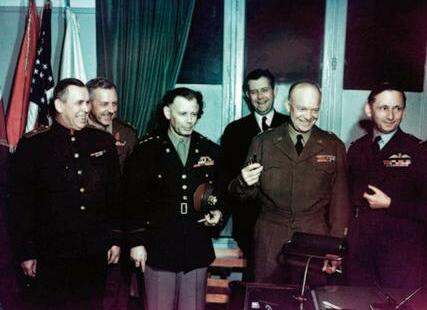
Eisenhower with Allied commanders after the signing of the document of German surrender at Reims, May 1945
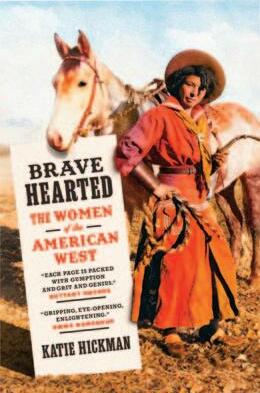
Brave Hearted: The Women of the American West
Katie Hickman They were hard-drinking and hard-living poker players and prostitutes; wives and mothers traveling in covered wagons; African-American women searching for freedom; Chinese sex workers sold openly on the docks of San Francisco; Native American women brutally displaced by white settlers. And all drew on reserves of courage in the face of tumultuous change.
Drawing on letters, diaries, and other contemporary accounts, historian Katie Hickman describes the women who participated in American history’s greatest mass migration.
Hickman’s book Brave Hearted: The Women of the American West (Spiegel & Grau) is available for purchase. Tues., Jan. 17, 6:30 p.m.; CODE: 1CV-006; Members $20; Nonmembers $25
Adam Smith’s America
Originally published in 1776, Adam Smith’s The Wealth of Nations was lauded by America’s founders as a landmark work of Enlightenment thinking about national wealth, statecraft, and moral virtue.
Author Glory Liu traces how generations of Americans have read, reinterpreted, and weaponized the ideas of this humble philosopher from Scotland—and how Smith continues to be a vehicle for articulating perennial moral and political anxieties about modern capitalism today. Her book Adam Smith’s America: How a Scottish Philosopher Became an Icon of American Capitalism (Princeton University Press) is available for purchase. Thurs., Jan. 19, 6:45 p.m.; CODE 1J0-226; Members $20; Nonmembers $25
Glory Liu
Jamestown: The First 100 Years
While the early days of Jamestown were marred with struggle, conflict, and tragedy, the settlement would survive as the first permanent English colony in North America, from which the seeds of the United States grew.
Unearth the tumultuous first century of Jamestown with Mark Summers, the public historian for the Jamestown Rediscovery archaeological project. JAN 23 The Powhatan and the English: 1607–1618 JAN 30 The First Africans: 1619–1662 FEB 6 Inevitable Uprising: 1622–1646 FEB 13 Bacon’s Rebellion: 1675–1699
4 sessions; Mon., Jan. 23, Jan. 30, Feb. 6, Feb. 13, 12–1:30 p.m.; CODE 1CV-JTN; Members $80; Nonmembers $90 Pocahontas, daughter of Chief Powhatan, saving Captain John Smith’s life Individual sessions: Mon., Jan. 23 (CODE 1CV-A07); Mon., Jan. 30 (CODE 1CV-B07); Mon., Feb. 6 (CODE 1CV-C07); Mon., Feb. 13 (CODE 1CV-D07); Members $25; Nonmembers $30

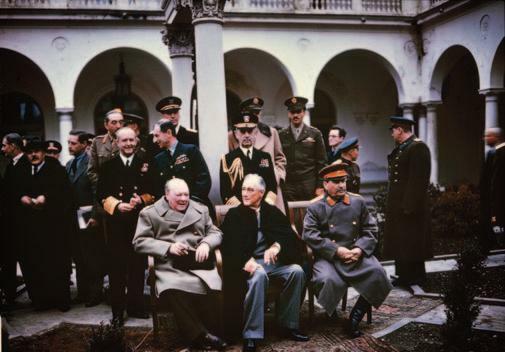
Winston Churchill, Franklin Roosevelt, and Joseph Stalin at the Yalta Conference, 1945
The Yalta Conference
The Road to the End of World War II
The February 1945 conference at Yalta marked the second meeting of the “Big Three”—U.S. President Franklin D. Roosevelt, British Prime Minister Winston Churchill, and Soviet Premier Joseph Stalin—during the Second World War. At this second conference, their decisions focused more on the postwar world and the future of Europe after the final defeat of Nazi Germany.
Historian Christopher Hamner examines the strategic context of the Yalta conference and the implications of the discussions on both the end of the war and the postwar settlement. Mon., Jan. 23, 6:30 p.m.; CODE 1H0-754; Members $20; Nonmembers $25
We are proud to work with C-SPAN. This digital library offers a selection of our past programs on a wide variety of intriguing topics. Learn more at SmithsonianAssociates.org/replay
Richard the Lionheart and Saladin
A Rivalry of the Third Crusade
The rivalry between the English king Richard the Lionheart and the Muslim ruler Saladin at the time of the Third Crusade continues to fascinate us today—yet they never actually met. King Richard at the Siege of Acre Harold DeLay, 1922 by Europeans had seized Jerusalem in 1099, establishing a Christian kingdom in the Holy Land. Saladin recaptured Jerusalem in 1187, setting the stage for a historic confrontation.
Historian Jennifer Paxton describes the epic clash between the Kurdish leader who had united much of the Muslim Middle East and the European king who was determined to recapture Jerusalem for Christendom. Wed., Jan. 25, 6:30 p.m.; CODE 1M2-238; Members $30; Nonmembers $35

Allied Strategy and Operation Overlord
The Great WWII Campaign
Most Americans know the basic outlines of the D-Day landings of June 6, 1944, the greatest and most complex amphibious invasion in human history. After four and a half years of war, 160,000 British, Canadian, and American soldiers landed in occupied France under the command of Gen. Dwight D. Eisenhower. Not as well known, however, is the Allied strategy and planning that led to Operation Overlord.
Military historian Kevin Weddle traces how U.S. and British leaders and their forces came together to fight in the greatest military operation in history. Tues., Jan. 31, 6:45 p.m.; CODE 1K0-335; Members $25; Nonmembers $30
U.S. troops advance over the seawall at Utah Beach, 1944
Your Monthly Digital Program Guide Is Always On Time!
It’s becoming harder and harder to be patient as widespread mail delays across the country are affecting the timely delivery of your monthly Smithsonian Associates program guide. But, in the meanwhile, we want to remind you of some of the convenient online options available to help you keep up with Smithsonian Associates’ programs and special offers. It Pays To Become A Member (Especially Today) The digital program guide is sent automatically to members via email (1-2 weeks before the print guide arrives).

Members receive early email announcements of new programs, free events, and other special offerings—ahead of the general public.
Visit Our Website Purchase tickets and make payments; become a member or renew your membership; sign up for program eAlerts; and access the popular Smithsonian Associates Digital Digest.
Place de la Bourse, Bordeaux

Discovering Bordeaux
World-class wine, medieval villages, museums, and markets: The historic Bordeaux region of France is truly a feast for all five senses. From the quaint wine hills of Saint-Emilion along the pilgrimage route to Santiago de Compostela to La Cité du Vin, a museum spotlighting the history of winemaking from 6000 B.C. to today, PBS television host Darley Newman shares the best of France’s renowned wine region.
She spotlights the area’s archaeological marvels, historic landmarks, cultural treasures, multiple wine tastings, and outstanding local boulangeries —all amid UNESCO World Heritage sites and generous helpings of history. Wed., Feb. 1, 6:45 p.m.; CODE 1J0-236; Members $20; Nonmembers $25
The Second Middle Passage: America’s Domestic Slave Trade
In the years between the American Revolution and the Civil War, an American slave trade rose to become more than twice the size of the first Middle Passage. More than one million enslaved African Americans from places like Maryland were forcibly sold to planters to work on cotton plantations in the Deep South.
Historian Richard Bell tracks the domestic slave trade and its impact on slavery’s expansion. He also discusses the unrelenting and often subversive resistance Black families mounted against enslavers’ attempts to divide them. Tues., Feb. 7, 6:30 p.m.; CODE 1M2-241; Members $25; Nonmembers $30

Slave pen of Price, Birch, & Co., Alexandria, Virginia ca. 1860–1865
Hot-air balloons at sunset, Cappadocia, Türkiye

Discovering Türkiye
PBS television host Darley Newman shares great places to discover in Türkiye (the now-official name for Turkey) whether you’re visiting bustling bazaars in Istanbul or venturing off the beaten path.
In Istanbul, marvel at the dazzling Hagia Sophia, the Blue Mosque, and Galata Tower. In Şanlıurfa, walk through Göbeklitepe, an archaeological site older than Stonehenge. In Izmir and Urla along Türkiye’s Aegean coast, visit the oldest known olive oil workshop in Anatolia and view UNESCO World Heritage sites like Ephesus and Pergamum. Newman’s travel insights provide a guide to discovering the diversity and wonders of historic and contemporary Türkiye. Thurs., Feb. 16, 6:45 p.m.; CODE 1J0-237; Members $20; Nonmembers $25
I Do Solemnly Swear
A History of Supreme Court Nominations
In 1789, President George Washington nominated the first five justices to the Supreme Court, a result of the 1789 Judiciary Act. Of the 165 nominations since then, there have been a total of just 126 nominations confirmed and only 116 justices who sat on the country’s highest court.
While the Senate has generally deferred to the president’s choices, nominations have often come under scrutiny, and the process has sometimes been a tumultuous affair.
Historian Christopher Brooks surveys the Supreme Court’s history and nominations process and how politics have shaped today’s Court. Thurs., Feb. 23, 6:30 p.m.; CODE 1CV-009; Members $20; Nonmembers $25

Stonehenge: An Epic Enigma
Some 5,000 years ago, a Neolithic civilization in southern England began to erect the world’s most famous prehistoric standing-stone monument. Its builders left no written records, so why and how Stonehenge was constructed remains a mystery.
Modern scientists are slowly unlocking Stonehenge’s secrets, from the source of the smaller pillars (central Wales) to its purpose (a daily calendar or eclipse calculator). Whatever its true purpose, the stone circle remains a uniquely iconic enigma visited by 800,000 people each year.
Kelly Beatty, senior editor at Sky & Telescope magazine, discusses these new developments and the enduring mystery of Stonehenge. Wed., Feb. 8, 6:45 p.m.; CODE 1L0-504; Members $20; Nonmembers $25

Gold Rushes and Global Politics of Exclusion
Goldmining between 1848 and 1899 created wealth for many. But friction between Chinese and white settlers on the goldfields of California, Australia, and South Africa created the “Chinese Question”: would the United States and the British Empire outlaw Chinese immigration?
Historian and author Mae Ngai tells the story of Chinese people who left their homeland in pursuit of gold, the laws that excluded them from immigration and citizenship, and the consequences that still persist.
Ngai’s book The Chinese Question: The Gold Rushes and Global Politics (W.W. Norton & Company) is available for purchase. Tues., Feb. 7, 6:30 p.m.; CODE 1CV-008; Members $20; Nonmembers $25
The Chinese Question by Thomas Nast for Harper’s Weekly, 1871
Let’s Stay Connected!
facebook.com/smithsonianassociates Be sure we’re part of your social media mix.
instagram.com/smithsonianassociates twitter.com/smithsonianSA

Samarra Archaeological City, Iraq
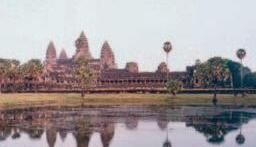
Angkor, Cambodia

UNESCO World Heritage Sites
ADI.SIMIONOV
RODRIGO DE ALMEIDA MARFAN There are 1,154 UNESCO World Heritage sites throughout the world. Each of them offers a fascinating glimpse into the evolution of complex civilizations, empires, and religions. Historian Justin M. Jacobs offers an in-depth overview of five of the most intriguing UNESCO World Heritage sites from around the world, from Iraq to Brazil. Each lavishly illustrated program goes far beyond the typical tourist experience by incorporating the insights of the latest scholarship and research. FEB 15 Samarra and the Abbasid Caliphate FEB 22 Angkor Wat MAR 1 Philippine Rice Terraces of Ifugao MAR 8 Sacred Sites of Tibet MAR 15 Brasilia, the Utopian Capital of Brazil 5 sessions: Wed., Feb. 15, Feb. 22; March 1, March 8, March 15, Philippine rice terraces, Ifugao 6:45 p.m.; CODE 1J0-242; Members $100; Nonmembers $125 Individual sessions: Wed., Feb. 15 (CODE 1J0-242A); Wed., Feb. 22 (CODE 1J0-242B); Wed., March 1 (CODE 1J0-242C); Wed., March 8 (CODE 1J0-242D); Wed., March 15 (CODE 1J0-242E); 6:45 p.m.; Members $25; Nonmembers $30
The Potala Palace, Tibet Catedral Metropolitana, Brasilia
Live from the United Kingdom Gothic Kingdoms
The Fall of Rome and the Birth of Europe
In August 410, the imperial city of Rome was sacked by the army led by Alaric the Goth. It was an event that came to symbolize the decline and fall of the western Roman empire, and after Alaric’s death his followers established the first Germanic state inside the old imperial frontiers: the Visigothic kingdom of Aquitaine.
In this wide-ranging talk, historian David Gwynn explores the dramatic histories of Gothic kingdoms through the surviving art and monuments and the writings of those who lived under Gothic dominion. Wed., Feb. 15, 12–1:15 p.m.; CODE 1J0-234; Members $20; Nonmembers $25
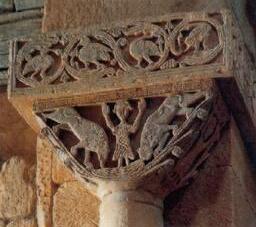
Capital from the Visigothic church of San Pedro de la Nave, province of Zamora, Spain
Support what we do at Smithsonian Associates
Please help us continue to carry out our educational mission by making a charitable contribution today. Your help is essential because, unlike the museums, Smithsonian Associates is not federally funded and relies entirely on donations and membership support to bridge the gap between program expenses and ticket revenue.
SmithsonianAssociates.org/levels

An Anatomy of Addiction
Medical historian Howard Markel traces the careers of two brilliant young doctors— Sigmund Freud, neurologist, and William Halsted, surgeon—showing how their powerful addictions to cocaine shaped their enormous contributions to psychology and medicine.
Markel examines the physical and emotional damage caused by the then-heralded wonder drug and how each man ultimately changed the world in spite of it—or because of it. One became the father of psychoanalysis; the other, of modern surgery.
Markel is the author of An Anatomy of Addiction: Sigmund Freud, William Halsted, Sigmund Freud and the Miracle Drug Cocaine. INSIDE SCIENCE Wed., Feb. 22, 6:45 p.m.; CODE 1J0-235; Members $20; Nonmembers $25
William Halsted
Frederick Douglass, 1840
Frederick Douglass: Autobiographer
In 1845, the great civil rights leader Frederick Douglass (1818–1895) published his bestselling Narrative of the Life of Frederick Douglass, an American Slave. It made his reputation and remains his most widely read work. But Douglass would continue to tell his life story over the next five decades.
Join Douglass scholar Robert S. Levine as he considers the significant changes and additions Douglass made to his later autobiographies and how, for Douglas, autobiography was personal and political, and arguably his most powerful way of making claims for Blacks’ civil rights. Thurs., Feb. 23, 6:45 p.m.; CODE 1K0-346; Members $20; Nonmembers $25
Join journalist Mark Whitaker for an exploration of the momentous year of 1966, in which a new sense of Black identity expressed in the slogan “Black Power” challenged the nonviolent civil rights philosophy of the Rev. Martin Luther King Jr. and John Lewis.
Whitaker offers portraits of the movement’s major characters and new details and insights from key players and journalists who covered the story. He also explains why the lessons of 1966 still resonate today.
Whitaker’s book Saying It Loud: 1966—The Year Black Power Challenged the Civil Rights Movement (Simon & Schuster) is available for purchase. Tues., Feb. 28, 6:45 p.m.; CODE 1K0-348; Members $20; Nonmembers $25
Mark Whitaker
What time does the program end? Unless noted, Smithsonian Associates programs run 1 hour 15 min.–2 hours, including Q&A
Scotland and England: An Imperfect Union?
Scotland is the only part of the island of Britain never to have been conquered by England. Yet Scotland has always had to reckon with its powerful southern neighbor, and the current campaign for Scottish independence demonstrates that the question of Scottish sovereignty is far from settled.
Historian Jennifer Paxton explores the remarkable story of the struggle to define Scottish identity over the past thousand years, as the country went from proudly independent kingdom to junior partner within Great Britain. Recent political events, including the Brexit vote, have caused some Scots to reevaluate the position of their country within the United Kingdom. 9:30 a.m. The Making of Scotland 11 a.m. The Wars of Independence and the Rise of the Stuarts 12:15 p.m. Break 1:15 p.m. The Union with England and the Jacobite Threat 2:45 p.m. The Making (and Unmaking?) of the British Sat., Feb. 25, 9:30 a.m.–4 p.m.; CODE 1M2-237; Members $80; Nonmembers $90

Edinburgh Castle

Live from Turkey Exploring Ancient Anatolia: A Turkish Odyssey

Anatolia’s colorful history has left a windfall of riches—ancient ruins, ornate Byzantine churches, elegant mosques, and splendid Ottoman palaces. Serif Yenen, a Turkish-born tour guide and author, highlights the heritage and splendor of ancient Turkey through an examination of some of its cultural gems, from Neolithic settlements and giant Roman temples to Christian rock-cut churches and the early Ottoman Empire’s stunning Great Mosque. MAR 1 Neolithic and Bronze Ages MAR 8 Iron-Age, Hellenistic, and Roman Periods MAR 15 Christianity in Anatolia MAR 22 The Turkish Period’s Capitals 4 sessions: Wed., March 1–22, 12–1:30 p.m.; CODE 1J0-239; Members $80; Nonmembers $90
Facade of the Library of Celsus at Ephesus, completed ca. 117 Ulu Cami mosque in Bursa, completed ca. 1399

Smithsonian Associates’ Digital Digest is a lively monthly e-newsletter filled with information about programs and experiences that are entertaining, informative, eclectic, and insightful. Be sure to catch every issue by subscribing at: smithsonianassociates.org/digital-digest

Alice Pike Barney Studio House, 1933 In-person Program The Studio House
A Setting for an Ambassador for the Arts With reception at the Embassy of the Republic of Latvia
The distinctive Studio House on Washington, D.C.’s, Sheridan Circle was built in 1903 for Alice Pike Barney, an artist, playwright, civic leader, and philanthropist. Barney held regular salons in the Studio House, where she brought together artists, writers, politicians, diplomats, and other prominent guests.
In 1960, Barney’s daughters donated the house to the Smithsonian, and eventually it became the Embassy of the Republic of Latvia. Join independent researcher Mona Khademi for an evening at the Studio House as she shares stories about Barney; traces the house’s Smithsonian connections; and looks at its life as an embassy. Afterward, enjoy a light reception—and imagine yourself as a guest at one of Alice Pike Barney’s salons. Thurs., March 2, 6:45 p.m.; The Embassy of the Republic of Latvia, CODE 1L0-506; Members $65; Nonmembers $80
Spring in the South of France
A Virtual Tour of the Region’s History, Culture, and Sights
Everyone from ancient Romans to Post-Impressionist artists to movie stars has been lured to the enchanting South of France. Its abundance of lavender-laced valleys, glittering seashores, medieval hill towns, and lively cities, all bathed in translucent light, are downright seductive. Journey with travel writer Barbara Noe Kennedy in a virtual exploration of Provence and the Côte d’Azur, including the region’s most intriguing sights, historical aspects, food and wine, and art. Among the locales are the formerly gritty city of Marseille, the Gothic palaces of Avignon, the sunny beaches of the French Riviera, and the gorges known as Europe’s Grand Canyon. MAR 2 Marseille and Aix-en-Provence MAR 30 Avignon and the Vrai Provence MAY 4 Côte d’Azur JUN 1 Off the Beaten Path 4 sessions: Thurs., March 2, March 30, May 4, and June 1, 7 p.m.; CODE 1CV-SFR; Members $80; Nonmembers $90 Individual sessions: Thurs., March 2 (CODE 1CV-A10); Thurs., March 30 (CODE 1CV-B10); Thurs., May 4 (CODE 1CV-C10); Thurs., June 1 (CODE 1CV-D10); 7 p.m.; Members $25; Nonmembers $30
Marseille Avignon Côte d’Azur Verdon Gorge

American Women and the Fight for Equality
Perspectives on a Century
The 19th Amendment enfranchising 26 million white and Black women became law on August 26, 1920. However, it did not enfranchise all women or even protect the rights of those women who could vote. Today, women are still grappling with how to use the vote and their political power to expand everything from civil rights to reproductive rights.
Drawing on her new book, Formidable, author Elisabeth Griffith discusses how the diversity of the women’s movement mirrors America. Formidable: American Women and the Fight for Equality: 1920–2020 (Simon & Schuster) is available for purchase. Thurs., March 9, 6:45 p.m.; CODE 1J0-244; Members $20; Nonmembers $25

Cuban History: Cycles of Hope and Heartache
More than 20 years ago, scholar Damián Fernández posited that Cuban history moves in cycles of “desire and disenchantment.” From the Cuban wars for independence through the Cuban Revolution and beyond, Cubans have often felt on the verge of fulfilling their nation’s destiny, only to find their hopes were misplaced or betrayed.
Historian Michael J. Bustamante charts these ups and downs from 19th-century Cuba to the present. He also reflects on the dramatic pivot from the hope inspired by the normalization of U.S.-Cuban relations between 2014 and 2016 to the disillusionment that followed. Thurs., March 9, 6:30 p.m.; CODE 1H0-761; Members $20; Nonmembers $25
Slavery and Freedom in the Shenandoah Valley
During the Civil War, Virginia’s Shenandoah Valley was the site of fierce conflicts, both on and off the battlefield. Historian Jonathan Noyalas examines how the region’s slaves faced their many challenges and how they supported the Union war effort by serving as scouts, spies, and laborers and by fleeing slavery to enlist in the United States Colored Troops.
Noyalas is the director of the McCormick Civil War Institute at Shenandoah University. His book Slavery and Freedom in the Shenandoah Valley During the Civil War Era (University Press of Florida) is available for purchase. Tues., March 14, 7 p.m.; CODE 1CV-012; Members $20; Nonmembers $25
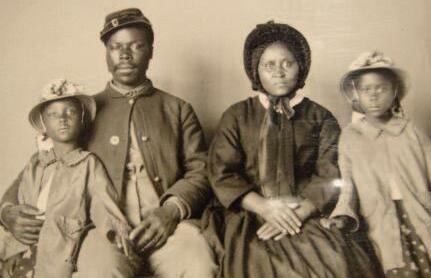
African American Union soldier with family, 1863

Manhattan Draft Riots, armed rioters clashing with Union Army soldiers, 1863
Lost Opportunities
The Troubled History of African American and Irish Relations
The individual histories of African Americans and Irish Americans have each been fraught with discrimination and hardship. Despite both groups having faced oppression and societal scorn as second-class citizens, they often found themselves at odds during the 19th century, with the competition for housing and jobs creating racial tensions. Historian Christopher Brooks discusses the parallel histories of African Americans and Irish Americans, the unlikely kinship of abolitionists Frederick Douglass and Daniel O’Connell, and how natural allies became historical rivals. Wed., March 15, 6:30 p.m.; CODE 1CV-011; Members $20; Nonmembers $25
Rebecca B. Roberts
Edith Wilson
The First (Unelected) Female President
While this nation has yet to elect its first woman as president, just over a century ago a woman became the first unofficial acting president. In 1919, Edith Bolling Galt Wilson effectively acted as president when her husband, Woodrow Wilson, was incapacitated. Beautiful, brilliant, charismatic, catty, and calculating, she was a complicated figure who reshaped the position of first lady into one of political prominence.
Rebecca Boggs Roberts, a leading historian who focuses on women’s suffrage and power, takes an unflinching look at the woman whose ascent mirrors that of many powerful American women. Tues., March 14, 6:45 p.m.; CODE 1K0-343, Members $20; Nonmembers $25
How the Internet Changed the Media
Media expert Brian Rose examines the many ways the Internet has radically transformed the “old” media of newspapers, magazines, the recording industry, film, radio, and television. He traces how this digital revolution took place in such a short period of time and what lies ahead in the era of “new” media.
Rose explores questions such as whether there will be printed newspapers 10 years from now; if newsstands and bookstores will disappear as fast as record stores; if movie theaters will exist in their present form; and whether prime-time television will vanish. Thurs., March 16, 12-1:15 p.m.; CODE 1J0-247; Members $20; Nonmembers $25

The Heart of John Brown
On the night of October 16, 1859, John Brown and his followers attacked the federal arsenal in Harpers Ferry, Virginia—part of a plan to stir an enormous revolt that could destroy American slavery. But Brown and his accomplices were soon caught and Brown was hanged having failed to free a single enslaved person. Why do Brown’s failed actions still matter? Historian John Brown by Augustus Washington Richard Bell argues that Brown’s execution made him a martyr among Northerners and paved the way for Lincoln’s unprecedented election, the secession crisis, and the coming of the Civil War. Thurs., March 16, 6:30 p.m.; CODE 1M2-249; Members $25; Nonmembers $30

Tudor London
A Dynasty’s Imprint on History
There are few periods of British history that command greater curiosity and interest than the years associated with the Tudor dynasty (1485–1603). Although this significant ruling family spanned only three generations, it produced some of the most memorable monarchs of any age or place.
Historian Cheryl White examines four historical themes that were significant to the promoting of the indelible Tudor imprint upon history, inviting participants to engage with the intriguing but often dangerous court life of Henry VIII, witness the dramatic religious and social challenges wrought during the reigns of Edward VI and Portrait of Queen Mary I of England, by Antonis Mor, 1554Mary I, and experience the progressive but cautious Renaissance court of Elizabeth I, whose patronage of the arts gave her name to an entire age of world history. 9:30 a.m. Introduction: London Landscapes and Landmarks 11 a.m. Royal Fortresses, Castles, and Palaces 12:15 p.m. Break 1:15 p.m. The Dark Side of Tudor London: Prisons, Tortures, Execution Sites 2:45 p.m. The Tudor Religious Landscape of London Sat., March 18, 9:30 a.m.–4 p.m.; CODE 1M2-248; Members $80; Nonmembers $90

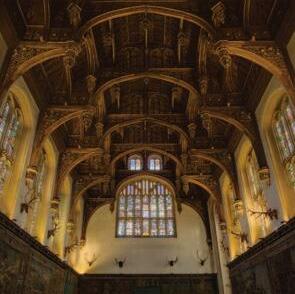
The ceiling of the Great Hall of Hampton Court Palace

Keep Connected with Smithsonian eAlerts!
Subscribe now to our topic-based eAlerts to match your interests. You can look forward to receiving timely information about new programs, special Smithsonian offers, our curated Digital Digest newsletter, and much more to spark your imagination and inspire learning.
You’re sure to find something to enjoy among the outstanding online programs offered each month. Get ready to explore a whole world of subjects—from art and architecture to history, culinary arts to science, travel to literature, and so much more!
Simply sign up at SmithsonianAssociates.org/eAlerts and you’re set.
Privacy Policy: We do not rent or sell our e-mail addresses.

Alice Roosevelt Longworth; Secretary of State Philander Knox, an unidentified man, and Secretary of Commerce Charles Nagel at Fort Myer, Va., July 1909
Stories from a Single Image True Tales from the Life of Alice Roosevelt Longworth
Alice Roosevelt Longworth, sitting in her Baker electric car, pours from a thermos. Three men look up at her expectantly: Secretary of State Philander Knox, an unidentified man, and Secretary of Commerce Charles Nagel. They’re all at Fort Myer, Virginia, for the Wright brothers’ Military Flyer trials in July 1909. The historic flights were a social calendar highlight of the year for the cream of Washington society.
In a richly illustrated presentation, master storyteller Paul Glenshaw speaks with historian Callan Shea as he peels back the fascinating layers in this deceptively simple image. Thurs., March 23, 6:45 p.m.; CODE 1K0-344; Members $20; Nonmembers $25
Magna Carta: A Blueprint for Democracy
Magna Carta originated in 1215 as what was essentially a failed peace treaty between King John of England and his barons. Centuries later it transformed into a document held by the Founding Fathers as a foundational cornerstone of citizens’ rights in this country.
Thomas J. McSweeney, a law professor at William and Mary Law School, explores the document’s evolution beginning in the 13th century through its role in 17th- and 18th-century revolutions. He surveys some of the major historic debates about Magna Carta and whether it is a good model for the guarantee of rights in a republic. Wed., March 22, 6:30 p.m.; CODE 1H0-760; Members $20; Nonmembers $25
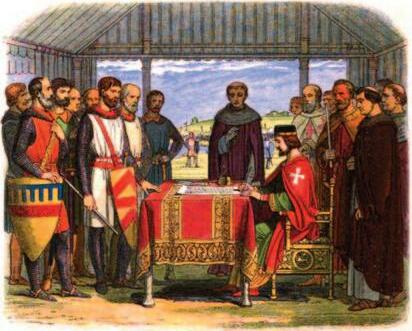
King John signs the Magna Carta
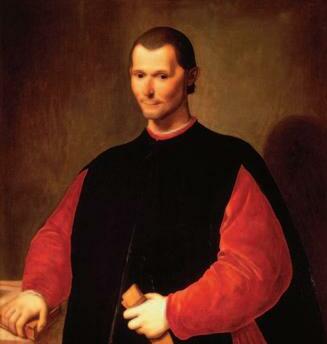
Portrait of Machiavelli by Santi di Tito
An Enemy of the People? Niccolò Machiavelli in Context
Florentine statesman Niccolò Machiavelli’s 1513 treatise, The Prince, was not long, but its perceived message has lost little potency 500 years later. After all, it advised leaders that the iron fist is far more effective in governing than the velvet glove—that is, fear trumps human kindness.
Author Ross King places Machiavelli in the context of his times and examines his more positive legacy and influence. Although an English cardinal had described him as an enemy of the human race, Machiavelli’s lessons on leadership, liberty, virtue, and good government are worth re-examining today. Wed., March 29, 6:30 p.m.; CODE 1H0-758; Members $20; Nonmembers $25
Wonder Tales from Japan
Whether they’re called fairy tales or something else, magical stories are found the world over. Like their Western counterpart, Japan’s fantastical stories—otogi-banashi—are part of the body of stories folklorists call “wonder tales”: They contain supernatural elements, are set in the land of once upon a time, and feature marvelous situations. “The Bamboo-Cutter and the Folklorists Sara Cleto and Moon-Child,” The Japanese Fairy Book, 1908 Brittany Warman explore traditional tales from Japan and how contemporary Japanese creators are taking a clue from the West as they combine the enchantments of wonder tales and fairy tales in modern genres like anime (animation) and manga (comics). Mon., April 3, 6:45 p.m.; CODE 1J0-249; Members $20; Nonmembers $25
The Changing Face of Television
YouTube, Bingeing, Streaming, and Beyond
Watching television used to be a fairly simple enterprise: You turned on the set and selected one of 500 cable channels. Now, more and more viewers are watching online-only channels like Netflix or Disney+. Many younger viewers prefer devices such as their laptops or their phones. And tens of thousands of kids and teenagers have started their own TV networks on YouTube, bypassing regular programming altogether. Drawing on video clips to illustrate his talk, media expert Brian Rose explains why the old days of simply “watching TV” are fast disappearing. Thurs., April 13, 12–1:15 p.m.; CODE 1J0-250; Members $20; Nonmembers $25

World Art History Certificate elective: Earn 1 credit Cultural Heritage Sites of India
From India’s elaborately decorated Ajanta Caves to the splendor of the Taj Mahal, UNESCO’s list of World Heritage Sites offers a spectacular window into South Asia’s past. Art historian Robert DeCaroli highlights historic palaces, grand temples, royal mausoleums, and more that showcase how India’s rich religious traditions have inspired the creation of many of the subcontinent’s abundant historically and culturally significant destinations. 9:30 a.m. Rock-cut Wonders 11 a.m. Sacred Sites (Part 1) 12:30 p.m. Break 1:30 p.m. Sacred Sites (Part 2) 2:45 p.m. Seats of Power Sat., April 22, 9:30 a.m.–4 p.m.; CODE 1J0-252; Members $80; Nonmembers $90






